List of Authors
>>About this blog
Recent blog post
|
[Asunaro]
January 15, 2019 18:00
The tea room "Nyoan" built by Urakusai Oda (the younger brother of Nobunaga Oda) is one of Japan's three most famous seats.
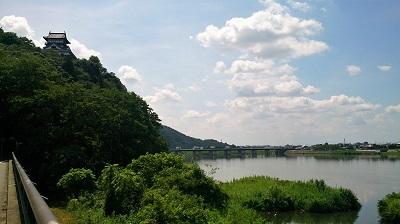
<Inuyama City 2016 Photographed>
After many relocations, I am currently living in Inuyama City.
You can experience this charm at the Mitsui Memorial Museum.
An exhibition case that recreates the interior of the National Treasure Tea Room "Nyoan", which is related to the Mitsui family.
Now, "National Treasure Shino Chawan" is on display and is worth seeing.
I thought it was not wide because it was a two-and-a-half tatami mat.
I feel the actual space is wide.
I think this is one of the reasons for this.
And it leads to room around the tea ceremony entrance.
It seems that there is also the advantage of the ease of use that makes it easier to serve.
I won the tea ceremony space that combines the use and beauty.
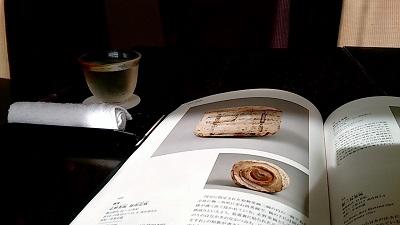
A moment of lingering in the cafe attached to it.
Eat sweet Japanese sweets and then drink matcha.
It's very comfortable.
◆Mitsui Memorial Museum
7th floor of Mitsui Main Building, 2-1-1 Nihonbashi Muromachi, Chuo-ku, Tokyo
National Treasure Snow Pine and Animal Art
Until Thursday, January 31, 2019
[Hanes]
January 15, 2019 09:00
Hello. This is a new correspondent, Hanes. 
Continuing from the last time, it is Chuo-ku sightseeing certification measures route edition.
③Route name and station name of Tokyo Metro
There are 6 Tokyo Metro lines that pass through Chuo-ku!
Ginza Line: Mitsukoshimae Station, Nihombashi Station, Kyobashi Station, Ginza Station
Tozai Line: Nihombashi Station, Kayabacho Station
Hanzomon Line: Mitsukoshimae Station, Suitengumae Station
Hibiya Line: Kodemmacho Station, Ningyocho Station, Kayabacho Station, Hatchobori Station, Tsukiji Station, Higashiginza Station, Ginza Station
Marunouchi Line: Ginza Station
Yurakucho Line: Ginza 1-chome Station, Shintomicho Station, Tsukishima Station
 The Chiyoda Line, the Namboku Line, and the Fukutoshin Line are not available. The Chiyoda Line, the Namboku Line, and the Fukutoshin Line are not available.
Please refer to (1) for the Hanes-style countermeasures for route problems.
For routes with a large number of stations, such as the Hibiya Line, you can feel like a game like a Yamanote Line game.
If you pronounce while clapping, you can enjoy learning.
You can do it alone, with test takers and their families, so how about a break time?
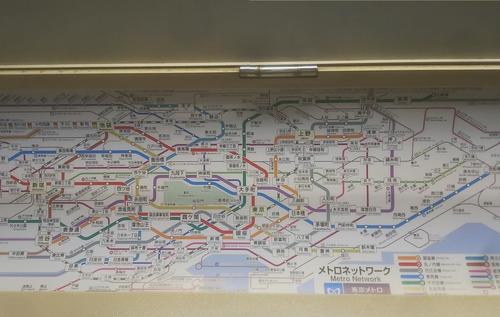
④Year of opening
When multiple subway stations are completed, such as Tsukishima, access becomes better and bustle is created.
When and how many stations have been completed can also be a hint when answering.
[In the case of Tsukishima area] Completed Tsukishima Station on the Yurakucho Line in 1998
Completed Kachidoki Station on the Oedo Line in 2000
With this time, the last article on the route and this year's Chuo-ku sightseeing certification measures will be the last.
The countermeasures vary from person to person, but it is also a good study to output what you have input.
A little more until the test day! Let's do our best for each other.
■Websites that can be used to combat route problems
JR East "Tokyo Suburban Route Map (posted in-vehicle version)"
Toei Subway Tokyo Metropolitan Bureau of Transportation Route Map
Tokyo Metro "Tokyo Metro Route Map (Detailed Version)"
※In this article, we will introduce some of the reasons for this.
If you learn the contents written here, you will not be able to pass it.
Please include it in advance.
[Hanes]
January 13, 2019 12:00
Hello. This is a new correspondent, Hanes. 
Everyone planning to take the Chuo-ku Tourism Test, is your study progressing smoothly?
When it gets cold, it's hard to walk around the town.
In my case, on a warm day, I don't hesitate to visit historical sites and unfamiliar areas in the city.
By the way, the other day, we sent a river / bridge, Haiku / Kawayanagi, song / catchphrase as a measure for sightseeing certification in Chuo-ku.
From this time, I will introduce the route edition in two parts!
As with the river and bridge edition, for those who are not from Tokyo and do not use public transportation very much, this is the case.
I think it's a type of problem that makes you feel weak.
But don't worry!
If you hold the points, if you are not afraid of the route, you will be able to laugh and enter the test.

There are four points to keep in mind.
①JR East Line name and station name
②Toei Subway Line and Station Name
③Route name and station name of Tokyo Metro
④Year of opening
The route section (1) explains 1 and 2, and the route section (2) explains 3 and 4.
①JR East Line name and station name
There are only 2 JR lines that pass Chuo-ku, and only 3 JR stations!
JR Sobu Line: Bakurocho Station, Shin-Nihonbashi Station
JR Keiyo Line: Hatchobori Station
How about it?
If you divide this way, don't you feel like you can learn the route?
②Toei Subway Line and Station Name
There are only three Toei Subway lines that pass through Chuo-ku!
That is the Toei Shinjuku Line, Toei Oedo Line, Toei Asakusa Line
The number of stations on each line is 2, 3, and 5 in order.
Toei Shinjuku Line: Hamacho Station, Bakuro-Yokoyama Station
Toei Oedo Line: Tsukishima Station, Kachidoki Station, Tsukiji Market Station
Toei Asakusa Line: Higashi Nihonbashi Station, Ningyocho Station, Nihombashi Station, Takaracho Station, Higashi-Ginza Station
The Toei Asakusa Line runs to the station with Higashi in Chuo-ku.
By the way, the Toei Asakusa Line is also used when going to Haneda Airport.
I'm too good at route problems, so I challenged with no mark in last year's certification.
Unfortunately, I couldn't find the answer to the route problem that was questioned, and I was inadvertently wrong.
For this reason, this year we are taking measures for routes using the methods introduced in the future.
①Paste the route map in places you usually see (refrigerator, washroom, etc.)
②Look at the route map during commuting (because the transfer route information is often displayed)
③Memorize the announcement in the car (input "● Line changes to the line")
④One person who is not a Yamanote Line game ●● Play a line game (effective for routes with a large number of stations!)
⑤Actually use the station (regardless of whether or not you have a ride)
⑥Make a word card (station name on the front, line name on the back)
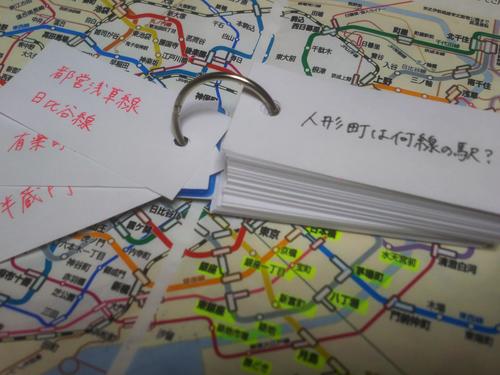
If you keep the tips on the route and remember it, think it's not scary, so let's survive!
Continue
◼️ Websites that can be used to combat route problems
JR East "Tokyo Suburban Route Map (posted in-vehicle version)"
Toei Subway Tokyo Metropolitan Bureau of Transportation Route Map
Tokyo Metro "Tokyo Metro Route Map (Detailed Version)"
※In this article, we will introduce some of the reasons for this.
If you learn the contents written here, you will not be able to pass it.
Please include it in advance.
Valuable Information| Ningyocho, Hamacho, Higashinihombashi area| Tsukuda, Tsukishima, Kachidoki and Harumi areas| Nihonbashi, Kyobashi and Yaesu areas| History, culture| Tsukiji, Shintomi, Minato area| Kayabacho, Hatchobori, and Shinkawa areas| Ginza area
Page top▲
[Hanes]
January 10, 2019 14:00
Hello. This is a new correspondent, Hanes. 
Join us on a tour for correspondents (it is a privilege of correspondents who can tour places that are not usually open to the public)
The other day, I went to Tsukiji Outer Market with Mr. Kozaru, a senior correspondent who was getting along well.
One of the merits of becoming a correspondent is that you can also interact with those who are interested in the history, culture, gourmet, events, etc. of Chuo-ku.
If you are looking for a companion to walk around the town, or if you are looking for a pioneering partner for Ginza / Tsukiji gourmet, please
Why don't you take the Chuo-ku sightseeing test and aim to be a correspondent?
By the way, the new specialty of Tsukiji in the title is the grand opening on January 11th.
You can have it at TSUKIJI DELI Tsukiji alley back store produced by Tsukiji Oomiya Beef Store.
The place is on the left side of the narrow passage between Isemasa, a marine product, and Tsukiji Kimuraya, famous for Anpan.
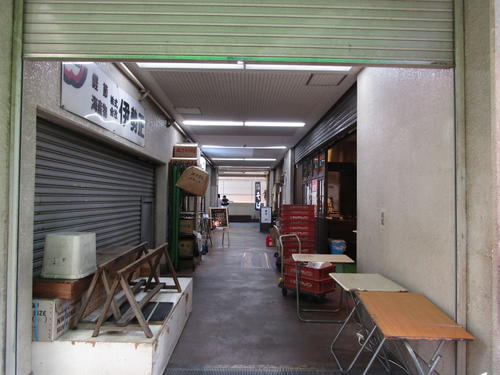
(It's around where you can see the signboard.)
The interior of the store has a brick motif that reminds you of Tsukiji during the Tsukiji Reservation period, and is stylish.
And because it is located behind the alley as you can see in the store name.
It's calm enough to think, "Is it really a Tsukiji Outer Market?", It looks like a hideaway.
Isn't it a perfect place when you want to relax a little in Tsukiji, where there are many people?
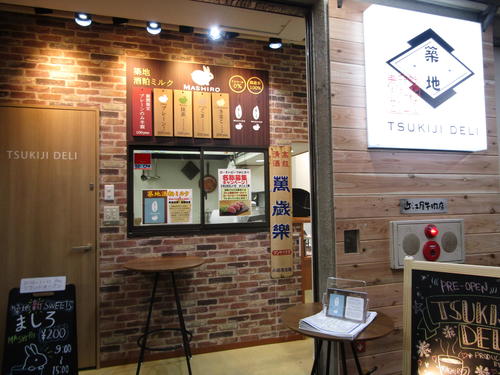
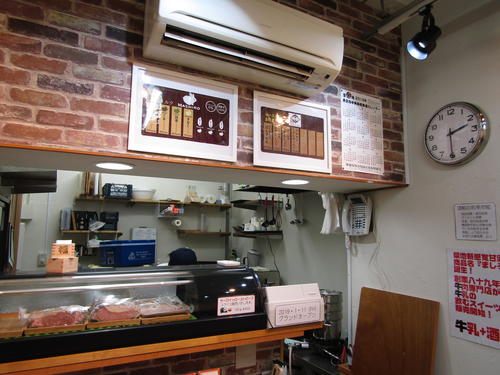
And the menu that is expected to become a new specialty is the menu.
Tsukiji sake lees Milk Mashiro (MASHIRO) and roast beef rice ball (RBO).
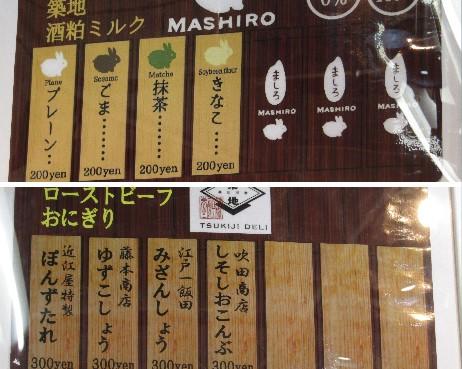
The visit was a pre-opening period before the grand opening.
We were able to get more (Plain) for half price of 100 yen!
The white rabbit (based on the legend of Kaga's Moon Rabbit) is very cute and seems to be a girl.
It's not just cute.
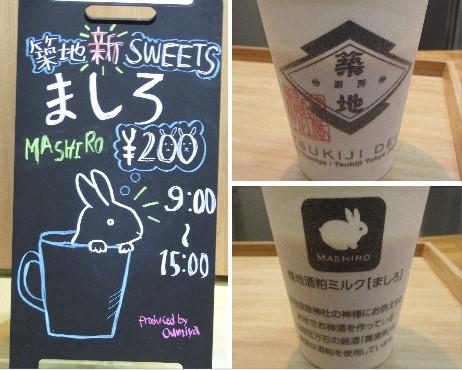
This drink was made of rice offered to the god of Tsukiji Namiki Shrine.
It is a blend of precious sake lees and milk from Kaga Hyakumangoku famous sake "Manzai Raku".
It is a drink close to the god who has been watching Tsukiji for a long time since the landfill and construction of Tsukiji.
It can be enjoyed by drivers, regardless of men and women of all ages.
Another point is that it is non-alcoholic.
The scent is very similar to the usual amazake, but I was surprised to drink it!
Certainly, you can see that sake lees are contained, but the richness of milk is as effective as sake lees, and it is very smooth.
It is a sweet that you drink with a new sense that you did not seem to have ever existed.
And sake lees have a lot of nice effects.
It is said that sesame, matcha, and kinako flavors are also recommended because each taste comes out.
Next time, I would like to have other flavors.
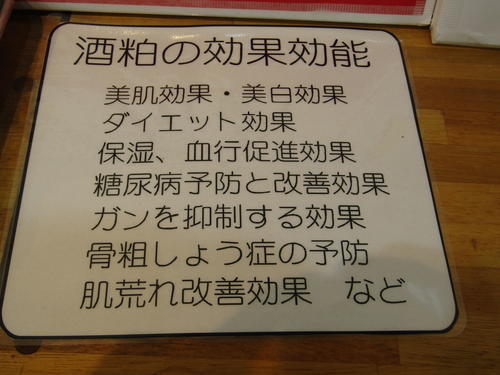
Also, the roast beef in the case seemed to be too delicious.
I also had roast beef rice balls!
This is a roast beef of serloin, which has been established for 90 years this year, with the reputation of Oomiya Beef Store.
This is a kind of collaboration product that incorporates ingredients from shops in Tsukiji Outer Market as ingredients.
It seems that there will be six types later, but the tools at the time of the visit were "Oomiya Special Ponzutare", "Fujimoto Shoten Yuzukosho", "Edo Ichi Iida Mizansho", and "Suita Shoten Shisoshi Okonbu".
All of them look delicious and get lost.
Meanwhile, we chose "Suita Shoten Shisoshi Okonbu" (Kozaru-san) and "Fujimoto Shoten Yuzu Kosho" (Hans).
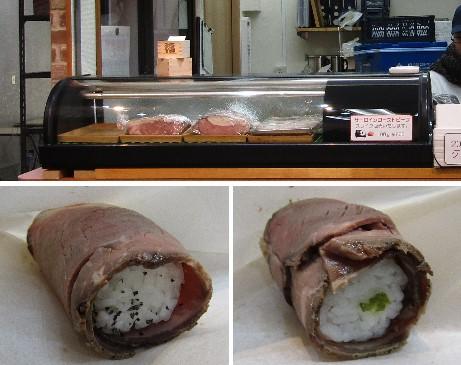
(Lower left: Shisoshio konbu, lower right: Yuzukosho)
The roast beef is very soft and I think, "Isn't it easier to bite than laver rice balls?"
Because it uses about 4g of roast beef, it has a volume.
I was thrilled that the rice ball part is rolled multiple times instead of one roast beef.
According to the shop, yuzu pepper is different from what you usually imagine, and it was fresh and a little bit crisp.
That's exactly right, the scent is very good, and I feel like "Yuzu pepper was so delicious ." ."
The solid taste and commitment of the store providing the ingredients were also shining.
Tsukiji is also famous as a tourist destination, but it is also a workplace.
The TSUKIJI DELI Tsukiji alley back store introduced this time excites the Tsukiji outside market with new products (new specialties).
It seems that people working in Tsukiji can also drop in casually and aim to make it a shop that can be used.
Of course, the word of mouth of tourists is also helpful, but it is those who work in the land who know hidden famous shops.
Even in Tsukiji, there are many shops that have become popular because they are said to be "Tsukiji professional purveyors" or "Tsukiji site related purveyors".
Therefore, it is also important to gain the support of those who work at Tsukiji.
This is currently called "Roast Beef Onigiri (RBO)", but we are actually looking for a name! (Deadline is February 28, 2019)
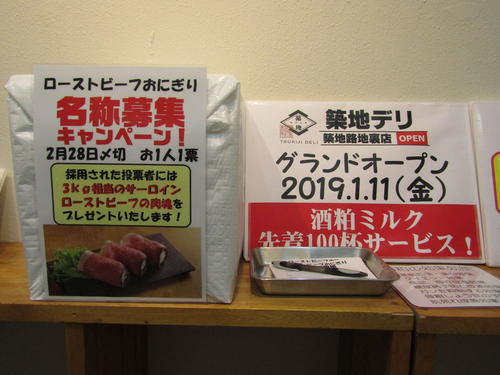
For those who have been hired, what! A meat chunk of sirloin roast beef equivalent to 3kg will be presented.
When you showed me how much it actually is, it seems to be this much.
Isn't it quite a lot?
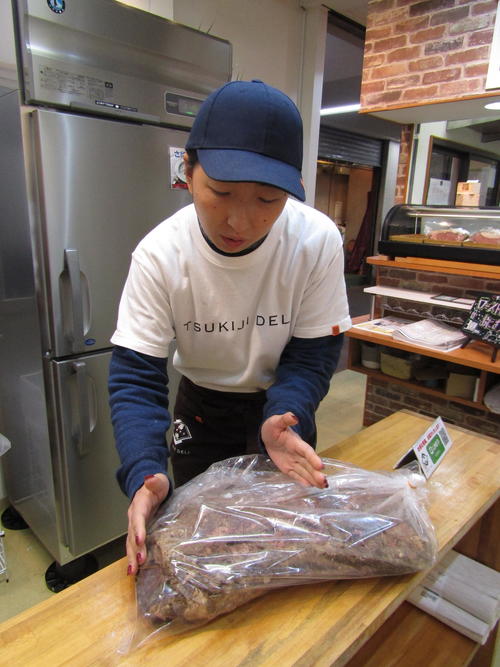
When you come to Tsukiji, please taste this rice ball and participate in the name recruitment campaign.
There's not a lot of such a luxurious and hungry campaign.
In addition, mackerel miso boiled (frozen), which was taken over by Chiaki third generation of fish riverbank, is also treated as a hidden specialty.
It's thick, has a strong taste and looks delicious.
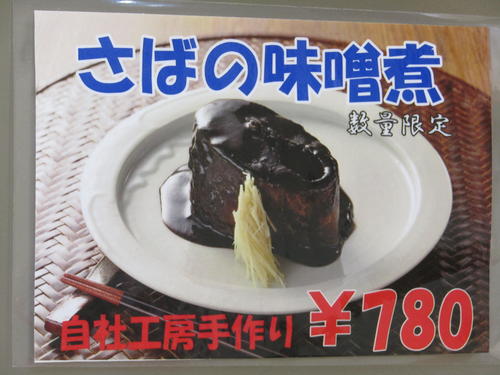
In addition, we also sell goods such as fashionable bags, T-shirts, and can badges with cute rabbits.
When you shop at Tsukiji, the number of plastic bags will increase, right?
In such a case, this bag is just right for putting your luggage together, and the town is well attached.
I'm glad that it can be used as a souvenir of Tsukiji and can be used everyday.
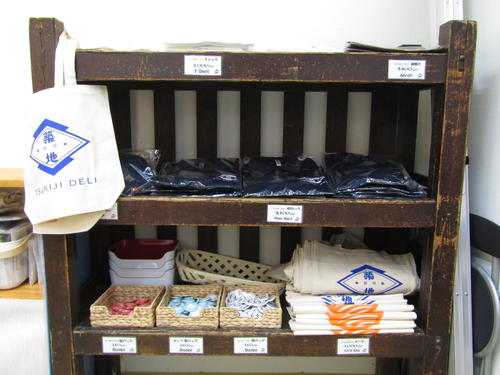
The shop is kind and comfortable, and I think it is a shop that will become more and more talked about in the future.
Why don't you go to taste the new specialties a little earlier?
■TSUKIJI DELI Tsukiji alley back store
Address: 4-14-1, Chuo-ku, Tokyo Monte Velde Tsukiji 109
(A little further along the narrow passage between Isemasa and Tsukiji Kimuraya)
Business hours 9:00~15:00
Regular holidays: Day, celebration
Take-out response: Allowed
Official Facebook: Here
Official LINE: Search for "TSUKIJI DELI alley back store"!
※We have received permission for introduction from the shop.
[wienerhorn]
January 9, 2019 18:00

Happy new year
It's been less than a month before the Chuo-ku sightseeing certification. Everyone who takes the test is finally in driving mode. I will continue to take on the challenge as I did last year.
After carefully reading "Chuo-ku Monoshiri Encyclopedia" and reviewing the past 1,000 questions, I found that there were my weaknesses in questions such as "Historic buildings" (p.152-153), "Tourism Event Information" (p.186), "Chuo-ku Machikado Exhibition Hall List" (p.187).
At first glance, I went to the site.
Today's course takes about 1 hour and 30 minutes on foot and by train.
-----
1.Tokiwa Elementary School in Chuo Ward (Historic buildings, Tokyo)
During the construction, the school building cannot be confirmed.
2.Historic buildings, Tokyo, Japan
The neatly arranged window frame is impressive.
3.Old Building Nihonbashi Nomura Building (designated Tangible Cultural Property)
A precious building near Nihonbashi.
4.Nihonbashi Diamond Building (Historic buildings selected by Tokyo)
The tower that imitates the bridge of the ship is impressive.
5.Suzuki Building (Historic buildings, Tokyo)
It is built in a quiet street and features various designs.
6.Onoya Sohonten (Nationally Registered Tangible Cultural Property)
Check the shape of the girder structure on the second floor. A long-established store of Tabi.
7.Miyakawa Egg (Historic buildings, Tokyo)
Copper plate of wall material. A clerk who is busy. There are many customers.
8.Jushi Square, Chuo-ku (Historic buildings, Tokyo)
Reconstruction Elementary School.
9.Bunjiro Tamaki Building (National Registered Tangible Cultural Property Building)
Mr. It faces an intersection with heavy traffic.
[Hanes]
January 9, 2019 12:00
Hello. This is a new correspondent, Hanes. 
This time, the extra edition of the river / bridge edition, it is a maniac content that is not questioned by the certification, so it is a maniac content.
I would appreciate it if you could use it as a reference when taking a walk....
And it is the bridge lights and lighting fixtures that will be picked up in advance!
In April, when I wrote a modern version of "Hashizukushi" with Yukio Mishima's short novel "Hashizukushi" in one hand.
I learned that the bridge light of Miyoshi Bridge is Suzuran Light.
Since then, I have been watching the bridge lights carefully when crossing other bridges.
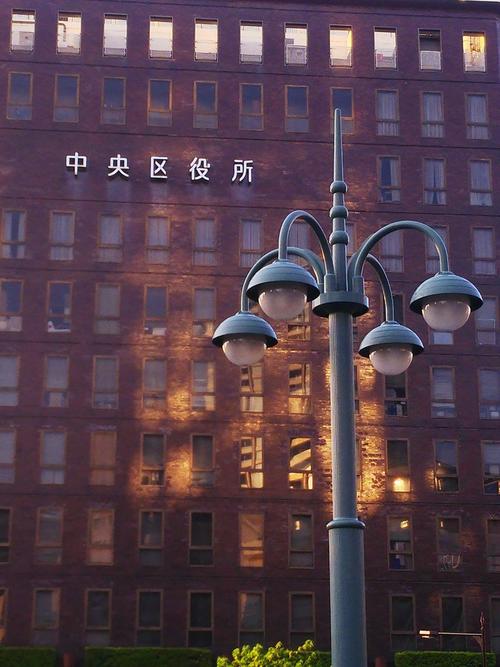
■Reigishi Bridge
Like alternating in the inflorescence (one in each node of the stem)
Polygonal bridge lights at different heights...It's simple but fashionable, isn't it?

■Shin-Kameshima Bridge
This bridge light is different from those of Reigishi Bridge and has an impressive curve.
It looks like a long herbivore dinosaur with a long neck.
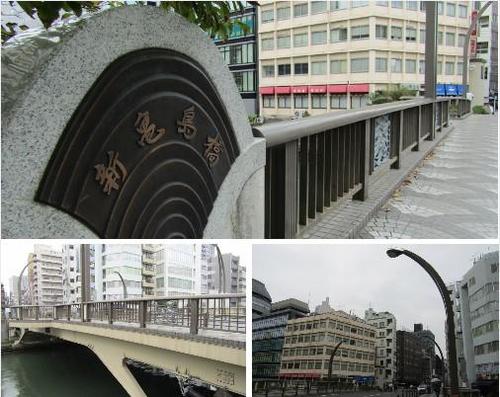
■Kameshima Bridge
There are two types of bridge lights that can be seen with white spheres.
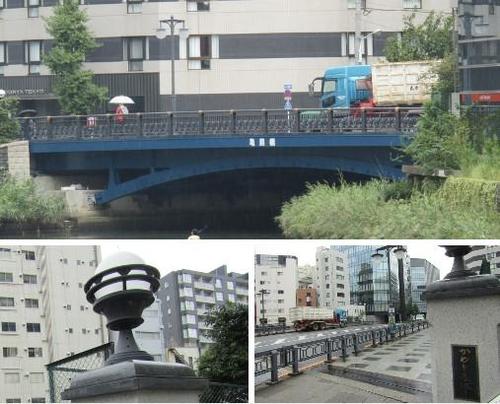
■Minami Takahashi
At first glance, there seems to be no lamps, but it is firmly attached.

■Edobashi
The lighting fixtures attached to the solid main pillar are impressive, and the bridge lights are somewhat Western-style.
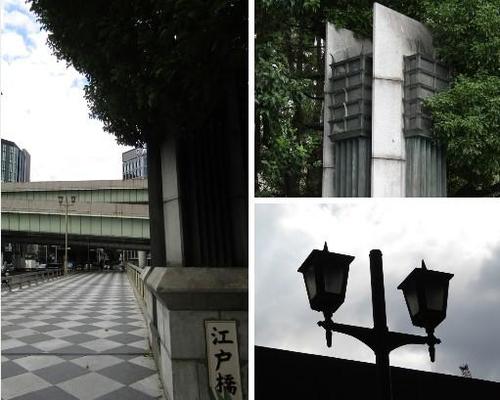
This time, I did not mention it, but the bridge lights of Ryogoku Bridge with the same design as at the time of completion.
It has a unique design that differs for each bridge, such as the bridge lights of Kiyosu Bridge designed like a lamp.
When you start watching it, you will notice the fun.
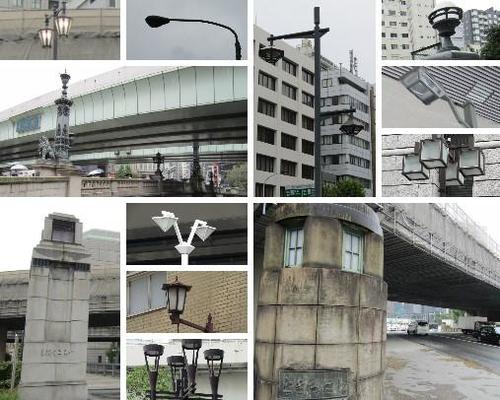
(Part of bridge lights and streetlights in Chuo-ku)
Some of them are characteristic, such as Suzuran Light, that are featured in novels.
Bridge lights and lighting fixtures have been entertaining our eyes both now and in the past.
|
Links
|

![]()

![]()
![]()






















